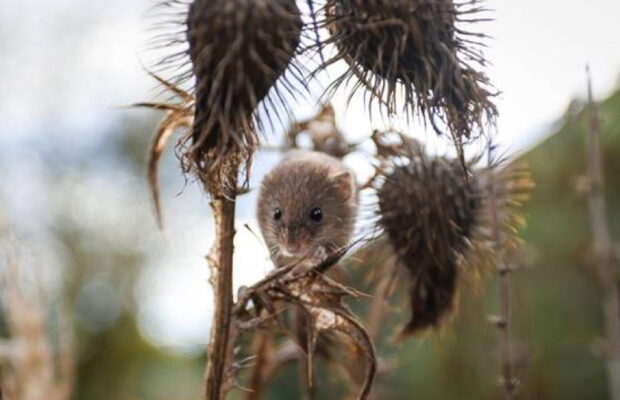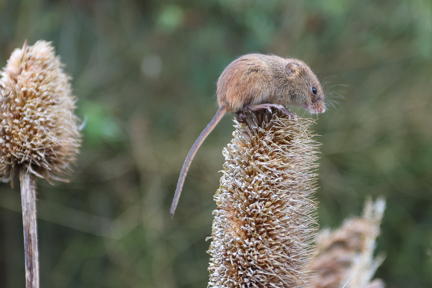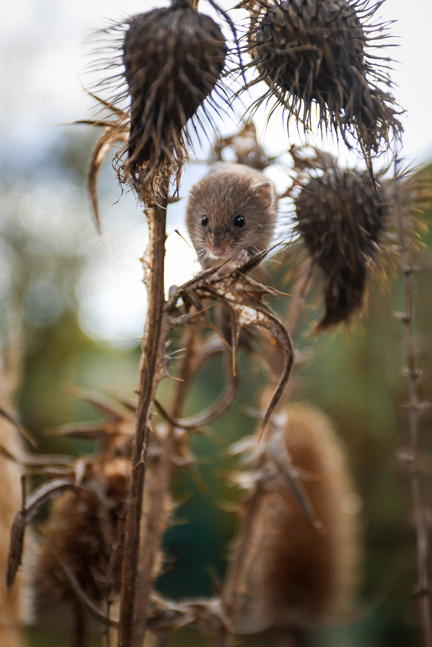- Home
- News
- What’s On
- Activities for Children
- Arts & Crafts
- Autos and Bikes
- Business events
- Car Boot & Auctions
- Charity events
- Churches & Religious
- Comedy
- Dance
- Days out & Local interest
- Education
- Exhibition
- Film
- Gardening & Horticulture
- Health
- Markets & Fairs
- Music
- Nature & Environment
- Spiritual
- Sport
- Talks and Discussions
- Theatre and Drama
- Business
- Local Information
- Jobs
- Deaths
- Charity events
- Contact Us
Booming harvest mice population in Chester Zoo’s nature corridor

Twenty years after hundreds of harvest mice were reintroduced by conservationists from Chester Zoo, new data has revealed the UK’s smallest rodent is now thriving in the zoo’s Nature Corridor.
Despite studies showing the species to be declining elsewhere in the UK, scientific surveys conducted in and around the zoo’s 30 ha Nature Corridor have confirmed strong densities of harvest mice breeding-nests up to 1.5 km away from where they were reintroduced back in 2002.

Harvest mice are the only British mammal to have a prehensile tail and are one of the UK’s most elusive and tiniest mammals, weighing less than a 2p coin.
Despite their size, they play a major role in the ecosystem, primarily as a food source for many native predators. They are a conservation concern in the UK as the species has continued to undergo significant declines in recent years, primarily due to habitat loss and intensive agriculture. Consequently, they’re listed as a ‘priority species’ under the UK Post-2010 Biodiversity Framework and are protected under the Wildlife and Countryside Act 1981.

Conservationists at Chester Zoo first setup an experimental breed and release programme to help inform potential reintroduction efforts across the country at the turn of the millennium, after surveys conducted across England between 1980 and 2000 showed drastic declines. Following strict protocols established by the IUCN, the zoo released 960 harvest mice between 2002–2004 to help save the vulnerable species from extinction. The project was hailed as a success and, 20 years later, experts have confirmed the descendants of those harvest mice are now thriving in and around the zoo’s nature reserve.
The release was led by Chester Zoo’s Registrar, Penny Rudd, who has championed the conservation of harvest mice during throughout her 42 years working at the zoo and personally microchipped all 960 mice during the release.
Penny, said:
“I’ve been at the zoo for a very long time, and I do see the harvest mouse recovery work I’ve been involved with as a huge legacy. I feel very proud of what we’ve done.
When the email dropped onto my desk saying we have strong harvest mouse evidence in the area all this time later — it was just the best feeling in the world!
As a major conservation zoo we’re very focused on lots of animals that come from all over the world, but actually we’re equally the guardians of our own wildlife in Chester and in the UK. Therefore, I think we should all be interested in that because there’s so much happening in the UK that we can be proud of and that we can have as our heritage.
I think every species should have a champion, and I’d like to feel I was the champion for harvest mice back in the turn of the century.
What the story tells you is that, if you champion a species, you can inspire others to join you and you can actually make a difference, because it has made a difference – we have clearly succeeded!”

You must be logged in to post a comment Login